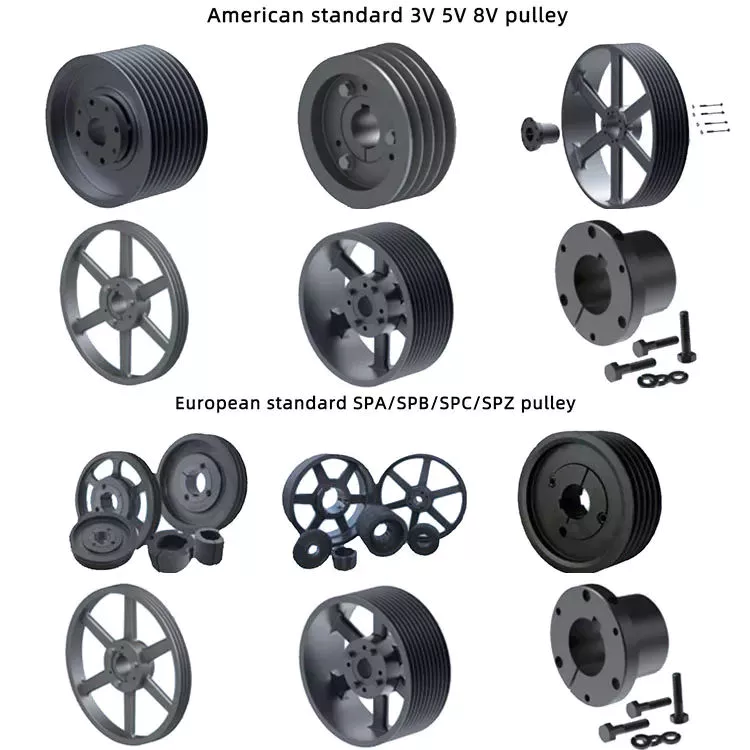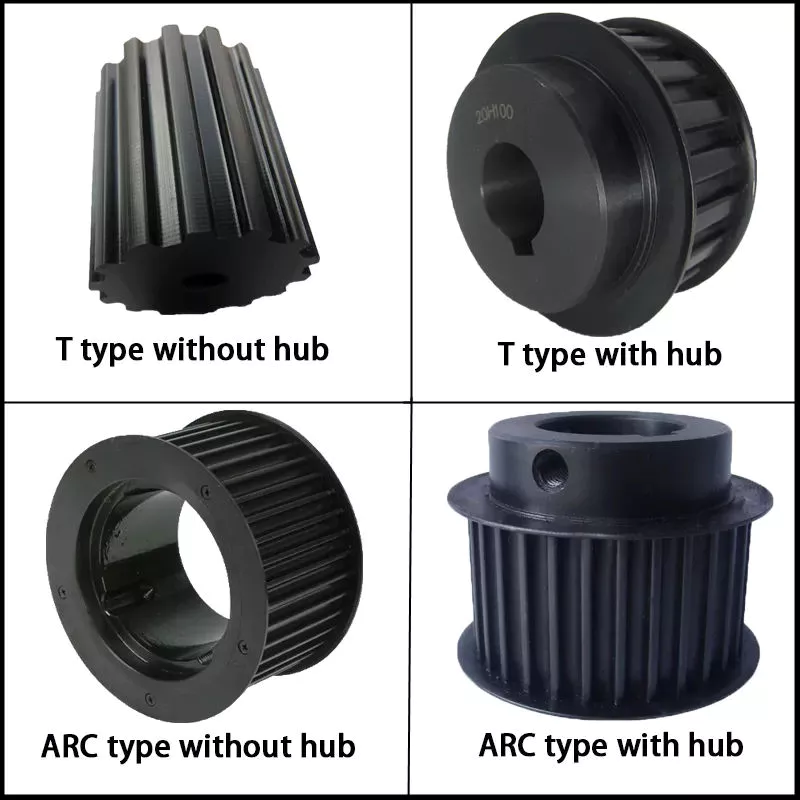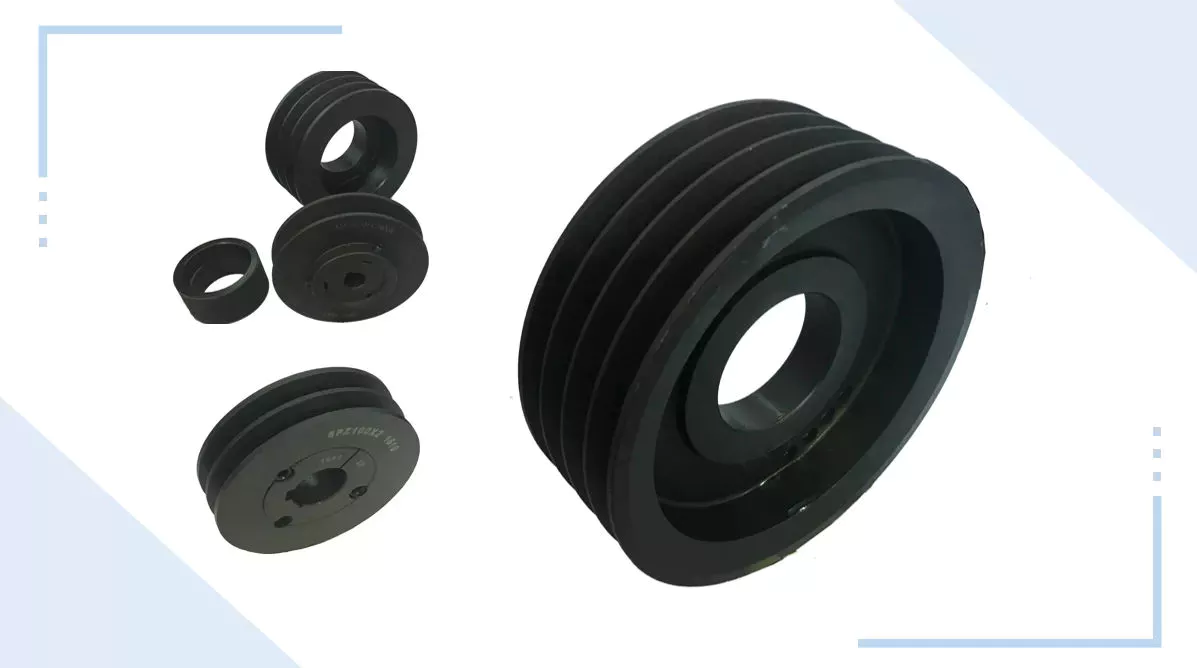Productomschrijving
Productomschrijving
Productparameters
| product | European Pulley Spb280-2-2517 /SPA/Spb /Spc /Spz for lithium battery industry equipment |
| material | stainless steel , iron , aluminum ,bronze ,carbon steel ,brass etc . |
| maat | ISO standard ,customer requirements |
| BORE | Finished bore, Pilot Bore, Special request |
| surface treatment | Carburizing and Quenching,Tempering ,Tooth suface high quenching Hardening,Tempering |
| Verwerkingsmethode | Molding, Shaving, Hobbing, Drilling, Tapping, Reaming, Manual Chamfering, Grinding etc |
| Heat Treatment | Quenching & Tempering, Carburizing & Quenching, High-frequency Hardening, Carbonitriding…… |
| Pakket | Wooden Case/Container and pallet, or made-to-order |
| Certificate | ISO9001 ,SGS |
| Machining Process | Gear Hobbing, Gear Milling, Gear Shaping, Gear Broaching, Gear Shaving, Gear Grinding and Gear Lapping |
| Applications | Toy, Automotive, instrument, electrical equipment, household appliances, furniture, mechanical equipment,daily living equipment, electronic sports equipment, , sanitation machinery, market/ hotel equipment supplies, etc. |
| Testing Equipment | Rockwell hardness tester 500RA, Double mesh instrument HD-200B & 3102,Gear measurement center instrument CNC3906T and other High precision detection equipments |
workshop & equipment
Production process
Certificeringen
Onze voordelen
1 . Prioritized Quality
2 .Integrity-based Management
3 .Service Orientation
4 .150+ advanced equipment
5 .10000+ square meter factory area
6 .200+ outstanding employees
7 .90% employees have more than 10 year- working experience in our factory
8 .36 technical staff
9 .certificate ISO 9001 , SGS
10 . Customization support
11 .Excellent after-sales service
shipping
sample orders delivery time:
10-15 working days as usual
15-20 working days in busy season
large order leading time :
20-30 working days as usual
30-40 working days in busy season
Veelgestelde vragen
1. why should you buy products from us not from other suppliers?
We are a 32 year-experience manufacturer on making the gear, specializing in manufacturing varieties of gears, such as helical gear ,bevel gear ,spur gear and grinding gear, gear shaft, timing pulley, rack, , timing pulley and other transmission parts . There are 150+ advanced equipment ,200+ excellent employees ,and 36 technical staff . what’s more ,we have got ISO9001 and SGS certificate .
2: What are the common types of tooth profiles for synchronous belt pulleys?
A: The most common tooth profiles for synchronous belt pulleys are the trapezoidal (or T-type) and curvilinear (or HTD-type) profiles. The tooth profile determines the pitch diameter, which affects the overall ratio of the gear drive.
3 .How long is the delivery?
A: Small orders usually takes 10-15 working days,big order usually 20-35 days, depending on orders quantity and whether are standard size.
/* March 10, 2571 17:59:20 */!function(){function s(e,r){var a,o={};try{e&&e.split(“,”).forEach(function(e,t){e&&(a=e.match(/(.*?):(.*)$/))&&1
| Certificering: | ISO |
|---|---|
| Katrolmaten: | V-Belt |
| Productieproces: | Forging |
| Materiaal: | Roestvrij staal |
| Oppervlaktebehandeling: | Galvaniseren |
| Sollicitatie: | Chemische industrie, graantransport, mijnbouwtransport, elektriciteitscentrale |
| Voorbeelden: |
US$ 5/Piece
1 stuk (min. bestelling) | |
|---|
| Aanpassing: |
Beschikbaar
| Aangepast verzoek |
|---|

Can pulleys be used in both simple and complex mechanical systems?
Yes, pulleys can be used in both simple and complex mechanical systems. Pulleys are versatile mechanical devices that can be incorporated into a wide range of systems to transmit power, change direction, or provide mechanical advantage.
In simple mechanical systems, pulleys are often used to create a mechanical advantage by reducing the effort force required to lift or move a load. For example, a simple pulley system with a single fixed pulley can distribute the load’s weight over multiple strands of rope or cable, reducing the force needed to lift the load. Simple pulley systems are commonly used in applications such as flagpoles, well buckets, or manual hoists.
In more complex mechanical systems, pulleys can be part of intricate arrangements to achieve specific functions. They can be combined with multiple pulleys, belts or ropes, and other mechanical components to create complex systems for power transmission, tensioning, or precise control. Examples of complex systems that utilize pulleys include conveyor belt systems, industrial machinery, cranes, and elevators.
Pulleys offer several advantages in both simple and complex mechanical systems:
1. Mechanical Advantage: Pulleys can provide a mechanical advantage by distributing the load’s weight over multiple strands of rope or belt, reducing the effort force required to lift or move the load.
2. Direction Change: Pulleys can change the direction of the force applied, allowing for redirection of motion or routing of belts or ropes around obstacles.
3. Speed Adjustment: By adjusting the size of pulleys and the number of pulley systems, the speed of the output motion can be modified relative to the input motion.
4. Power Transmission: Pulleys are effective in transmitting power between shafts or components, allowing for the transfer of rotational motion and torque.
5. Versatility: Pulleys can be used with different types of belts or ropes, such as flat belts, V-belts, timing belts, or wire ropes, providing flexibility in design and application.
Whether in simple or complex mechanical systems, the selection, arrangement, and sizing of pulleys should be carefully considered to ensure proper functionality, efficiency, and safety. Manufacturers’ guidelines, engineering principles, and best practices should be followed when incorporating pulleys into mechanical systems.

How are pulleys used in theater and stage rigging?
Pulleys play a vital role in theater and stage rigging, enabling the movement of scenery, props, and equipment with precision and control. They are essential components of the rigging systems used in theaters and stages for lifting, flying, and manipulating various elements during performances. Here’s how pulleys are commonly used in theater and stage rigging:
1. Fly Systems: Fly systems are used to raise and lower scenery, backdrops, curtains, and other elements onto and off the stage. They consist of a series of pulleys, known as blocks, mounted on battens or grids. The pulleys allow the use of counterweights or motorized systems to control the movement of the loads. By changing the configuration of the pulleys and adjusting the counterweights, stage crews can achieve smooth and precise vertical movement of the flown elements.
2. Counterweight Systems: Counterweight systems, commonly employed in fly systems, utilize pulleys to guide the lift lines and distribute the load. The pulleys help reduce friction and ensure that the counterweights move smoothly and efficiently. By adjusting the number and arrangement of pulleys, as well as the counterweight amounts, technicians can achieve the desired balance and control the speed and movement of the flown elements.
3. Line Sets: Line sets are used to suspend and control various elements such as lighting fixtures, speakers, and special effects equipment. Pulleys are incorporated into the line sets to redirect the lines and provide mechanical advantage. This allows technicians to easily raise, lower, and adjust the position of the equipment as needed. By manipulating the pulley system, stage crews can precisely position the equipment and achieve optimal lighting, sound, and visual effects during performances.
4. Automated Systems: In modern theater and stage rigging, automated systems are becoming increasingly prevalent. These systems use motorized pulleys, known as winches or hoists, to control the movement of scenery, lighting, and other elements. The motorized pulleys enable precise and programmable control, allowing for complex and dynamic stage effects. These systems often incorporate multiple pulleys and computerized controls for enhanced automation and synchronization.
5. Rope and Cable Management: Pulleys are also used in theater and stage rigging to manage ropes and cables. They are incorporated into rope locks, cable management systems, and tensioning devices to guide and redirect the lines, ensuring smooth operation and minimizing the risk of entanglement or snags.
6. Safety and Load Distribution: Pulleys in theater and stage rigging play a crucial role in ensuring safety and proper load distribution. They help distribute the load across multiple lines, reducing the strain on individual ropes or cables. Additionally, pulleys are often equipped with safety mechanisms such as locking devices or secondary braking systems to prevent accidental drops or equipment failures.
Overall, pulleys are integral to theater and stage rigging, providing the mechanical advantage, control, and safety measures necessary for the smooth and precise movement of scenery, props, and equipment. They enable the creation of visually stunning and immersive performances, enhancing the overall theatrical experience for audiences.

Kunt u de basisprincipes van katrolmechanica uitleggen?
Pulley mechanics are based on a few fundamental principles that govern the operation of pulley systems. Here’s an explanation of the basic principles:
1. Mechanisch voordeel: Het primaire principe van katrolmechanica is mechanisch voordeel. Een katrolsysteem zorgt voor de vermenigvuldiging van de kracht die op het touw of de riem wordt uitgeoefend. Door de kracht over meerdere segmenten van het touw of de riem te verdelen, wordt de last gemakkelijker te tillen of te verplaatsen. Het verkregen mechanische voordeel is afhankelijk van het aantal katrollen dat in het systeem wordt gebruikt. Hoe meer katrollen in het systeem, hoe groter het mechanische voordeel.
2. Krachtoverbrenging: Wanneer er kracht wordt uitgeoefend op één uiteinde van het touw of de riem, ontstaat er spanning waardoor de katrol gaat draaien. Terwijl de katrol draait, wordt de kracht overgebracht op de last die aan het andere uiteinde van het touw of de riem is bevestigd. Deze krachtoverbrenging zorgt voor de beweging en manipulatie van objecten in katrolsystemen.
3. Richtingsverandering: Een van de belangrijkste principes van katrolmechanica is richtingsverandering. Een katrolsysteem stelt de operator in staat de richting van de toegepaste kracht te veranderen. Door de kracht langs een ander pad te leiden, zorgt een katrolsysteem ervoor dat kracht wordt uitgeoefend vanuit een handiger of voordeliger positie. Deze richtingsverandering is met name handig in situaties waarin de kracht verticaal, horizontaal of onder een hoek moet worden toegepast.
4. Conservation of Energy: Pulley mechanics also adhere to the principle of conservation of energy. The work done on the load by the applied force is equal to the work done against the load’s weight. Through the pulley system, the input force is transformed into an output force that moves or lifts the load. The energy input and output remain the same, but the pulley system allows for the distribution and transformation of forces to achieve the desired mechanical advantage.
5. Snelheids- en koppelconversie: katrollen kunnen ook worden gebruikt om snelheid en koppel in mechanische systemen om te zetten. Door de grootte van de katrollen te variëren of katrollen met verschillende diameters te gebruiken, kunnen de rotatiesnelheid en het koppel worden aangepast aan de vereisten van het systeem. Deze snelheids- en koppelconversie maakt het mogelijk om de krachtoverbrenging te optimaliseren en verschillende rotatiesnelheden tussen invoer- en uitvoercomponenten op elkaar af te stemmen.
6. Meervoudige katrolsystemen: katrollen kunnen worden gecombineerd in systemen om een groter mechanisch voordeel te behalen of om complexe bewegingspatronen te creëren. In systemen met meerdere katrollen, zoals blok- en takelopstellingen, wordt de last verdeeld over meerdere segmenten van touw of riem, waardoor de inspanning die nodig is om zware objecten te tillen verder wordt verminderd. Deze systemen worden vaak gebruikt in kranen, liften en andere toepassingen waar zwaar tillen noodzakelijk is.
Deze basisprincipes van katrolmechanica vormen de basis voor het begrip en de toepassing van katrollen in mechanische systemen. Door het benutten van mechanisch voordeel, krachtoverbrenging, richtingsverandering, behoud van energie en snelheid/koppelconversie, bieden katrolsystemen een veelzijdige manier om lasten te heffen, verplaatsen en manipuleren in verschillende toepassingen.


redacteur door CX
2024-01-12
